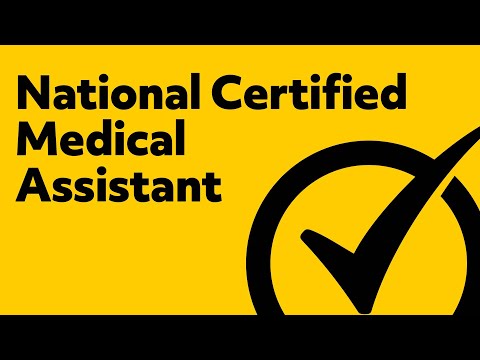Is a Medical Office Assistant the Same as a Medical Assistant?
Contents
- What is a Medical Office Assistant?
- What is a Medical Assistant?
- The Difference between a Medical Office Assistant and a Medical Assistant
- The Job Duties of a Medical Office Assistant
- The Job Duties of a Medical Assistant
- The Education and Training Required for a Medical Office Assistant
- The Education and Training Required for a Medical Assistant
- The Salary of a Medical Office Assistant
- The Salary of a Medical Assistant
- Career Outlook for Medical Office Assistants and Medical Assistants
A medical office assistant is a type of medical assistant who provides administrative support to a medical office. They may perform tasks such as scheduling appointments, handling billing and insurance, and greeting patients. Medical office assistants are not the same as Medical assistants who provide direct patient care.
Checkout this video:
What is a Medical Office Assistant?
A medical office assistant is a professional who provides administrative support to a healthcare team. They are responsible for tasks such as scheduling appointments, maintaining medical records billing and coding patients’ insurance information, and handling customer service inquiries. A medical office assistant may also be responsible for basic clinical tasks such as taking vitals or drawing blood.
A medical assistant is a professional who provides both administrative and clinical support to a healthcare team. In addition to the tasks typically performed by a medical office assistant, medical assistants may also be responsible for more advanced clinical tasks such as performing EKGs or administering injections.
While both medical office assistants and medical assistants provide vital support to healthcare teams, they have different roles and responsibilities. If you’re considering a career in healthcare administration, it’s important to research the different options available to you in order to find the role that best fits your skills and interests.
What is a Medical Assistant?
Medical assistants (MAs) are healthcare professionals who perform a variety of clinical and administrative tasks to support the work of physicians and other medical professionals. They are often the first point of contact for patients and play a vital role in the overall delivery of patient care.
MAs typically have an associate’s degree or certificate from a medical assistant program, although some states allow them to work without formal training. Most MAs are certified by a professional organization, such as the American Association of Medical Assistants (AAMA).
The duties of medical assistants vary depending on the state in which they work, but they generally fall into one or more of the following categories:
Clinical tasks: MAs may take patients’ medical histories, measure their vital signs, prepare them for examinations, assist with minor office procedures, and collect and process laboratory specimens.
Administrative tasks: MAs may schedule appointments, maintain Medical records file insurance claims, handle billing and coding duties, and perform other office tasks.
MAs may also provide patient education and support services, such as coordinating follow-up care and providing health promotion information.
The Difference between a Medical Office Assistant and a Medical Assistant
A medical office assistant is a position in a medical office or clinic that provides clerical support to the medical staff. Duties may include scheduling appointments, maintaining medical records billing and coding insurance forms, and handling correspondence. A medical assistant is a position that provides direct patient care. Duties may include taking vital signs, preparing patients for examinations, assists with office procedures, and giving injections. Medical assistants may also perform basic laboratory tests and collect specimens for lab analysis.
The Job Duties of a Medical Office Assistant
Medical office assistants are responsible for a variety of administrative tasks in a medical office or clinic. They may answer phones, schedule appointments, file patient medical records, process insurance forms and coding, and billing. Medical office assistants might also perform basic clinical tasks such as measuring patients’ vital signs, administering injections or vaccines, performing electrocardiograms (EKGs), and phlebotomy.
Medical assistants have more clinical training than medical office assistants and are allowed to perform more advanced tasks such as taking x-rays, removing sutures, and assisting with minor surgery. Medical assistants must complete an accredited medical assisting program and pass a certification exam.
The Job Duties of a Medical Assistant
A medical assistant is a healthcare professional who performs a variety of clinical and administrative tasks in order to support the work of medical professionals such as physicians and nurses. Medical assistants can be found working in a variety of settings, including hospitals, clinics, physician’s offices, and other healthcare facilities.
The job duties of a medical assistant vary depending on the specific workplace but may include tasks such as taking patient medical histories, recording vital signs, scheduling appointments, assisting with examinations and procedures, preparing patients for X-rays and lab tests, answering patient questions, and providing instructions on taking medication and other self-care tasks. In some states, medical assistants may also be able to administer medications or injections under the supervision of a physician.
The Education and Training Required for a Medical Office Assistant
Medical office assistants are administrative professionals who work in healthcare settings, providing support to doctors, nurses and other medical staff. They may also be known as medical secretaries or Medical Administrative Assistants
The education and training required for a medical office assistant varies depending on the employer, but most will require at least a high school diploma or equivalent. Some employers may prefer candidates who have completed a postsecondary medical office assistant training program. These programs are typically offered through community colleges and technical schools and take about one year to complete.
While not required, certification may also be beneficial for medical office assistants. The Certifying Board of Medical Office Assistants offers the Certified Medical Office Assistant (CMOA) certification, which requires candidates to pass an exam. Certified medical office assistants may have better job prospects and earn higher salaries than those without certification.
The Education and Training Required for a Medical Assistant
The education and training required for a medical assistant vary from country to country and from state to state. In the United States there is no formal education or training required to become a medical assistant, although most employers prefer to hire candidates who have completed a medical assistant program at a community college or vocational school. Medical assistants who have completed a formal education program generally have an advantage over those who have not when it comes to finding a job and being promoted.
The Salary of a Medical Office Assistant
Medical office assistants are responsible for a variety of administrative tasks in healthcare facilities. They may perform duties such as scheduling appointments, billing patients, and managing medical records. Medical office assistants typically need to have at least a high school diploma or equivalent, although some jobs may require postsecondary education or certification. The median annual salary for medical office assistants was $34,800 in May 2019.
The Salary of a Medical Assistant
In the United States, medical assistants make a median salary of $33,610 per year. reported by the U.S. Bureau of Labor Statistics in May 2018. The top 10 percent of earners made more than $46,680 per year, while the bottom 10 percent earned less than $24,740 annually.
Career Outlook for Medical Office Assistants and Medical Assistants
Medical Office Assistants (MOA) and Medical Assistants (MA) are both important members of the healthcare team. They both provide administrative and clinical support to physicians and other medical staff.
The main difference between MOAs and MAs is the scope of their duties. MOAs typically have more responsibilities in the administrative side of things, such as handling patient records, scheduling appointments, and billing. MAs, on the other hand, have more clinical duties, such as taking patient vital signs, administering injections, and assisting with minor surgeries.
Both MOAs and MAs need to be detail-oriented and organized, have good communication skills, and be able to work well under pressure. The job outlook for both MOAs and MAs is positive, with a projected growth of 23% from 2019 to 2029.*
If you’re interested in a career in healthcare administration or clinical support, becoming a Medical Office Assistant or Medical Assistant is a great place to start!
*Career outlook data from the US Bureau of Labor Statistics







